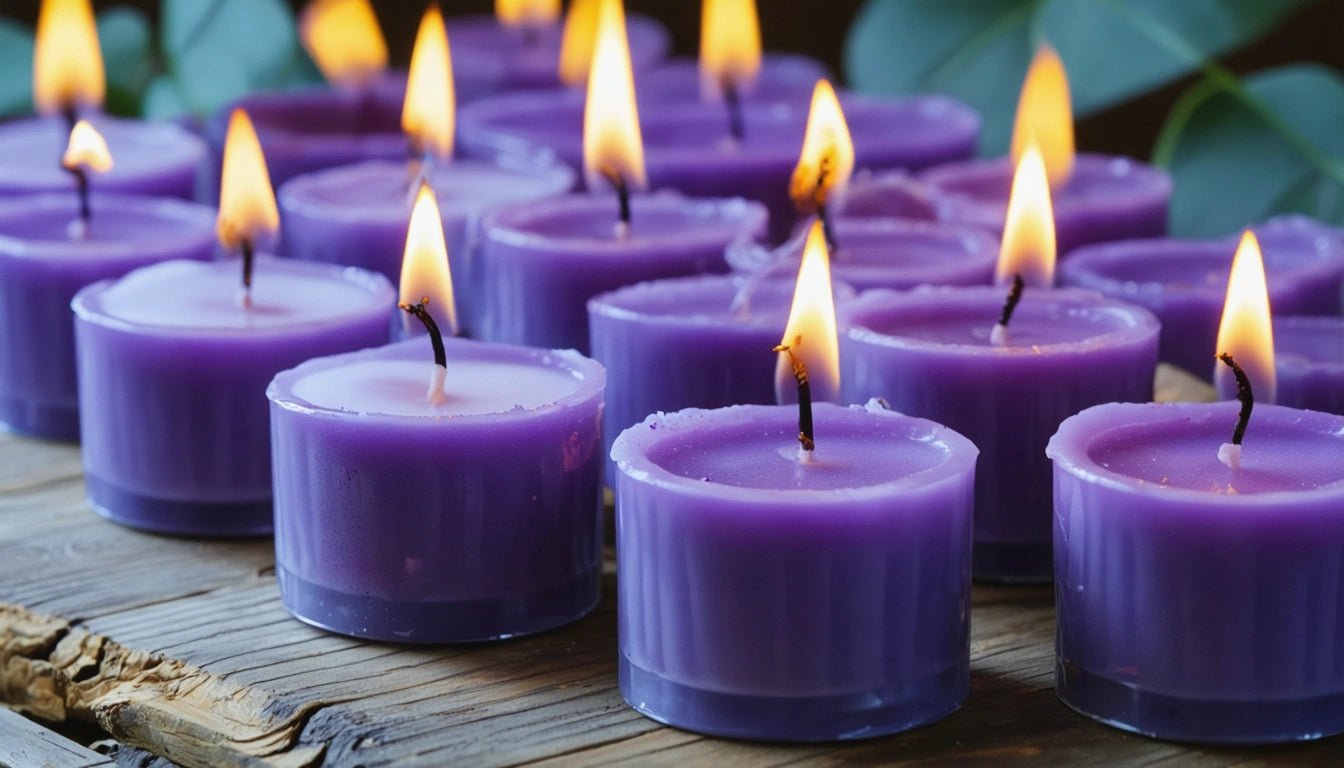Table of Contents
Can You Use Food Coloring to Color Candles?
When venturing into the world of candle making, one of the first questions many crafters ask is whether they can use food coloring to color candles. It's a reasonable question, especially when you already have food coloring in your kitchen and want to experiment with candle making without purchasing specialized supplies.
Can You Use Food Coloring in Candles? The Short Answer
Technically, you can add food coloring to candle wax, but it's not recommended for several important reasons. Food coloring is water-based, while candle wax is oil-based. This fundamental incompatibility creates numerous problems that affect both the appearance and performance of your candles.
According to this comprehensive guide on coloring candle wax, using the right colorants is crucial for creating vibrant, safe candles that burn properly.
Why Food Coloring Is Problematic for Candle Making
Water and Oil Don't Mix
Food coloring contains water, which doesn't mix with the oil-based wax. When you attempt to blend them:
- The food coloring tends to separate from the wax
- The water content can create sizzling or popping when the candle burns
- The color often appears spotty or unevenly distributed
- The water can interfere with the candle's burning properties
Safety Concerns
Beyond appearance issues, there are safety considerations:
Food coloring isn't designed to be burned. When heated, it may release chemicals not intended for inhalation. Additionally, the water content in food coloring can create dangerous splattering when the candle burns, potentially causing fire hazards.
Better Alternatives for Coloring Candles
Fortunately, there are several excellent alternatives specifically designed for candle making:
Candle Dye Blocks
These concentrated color blocks are made specifically for candles. They melt seamlessly into wax without affecting burn quality. As noted in this guide to choosing candle wax, different waxes may require different amounts of dye to achieve the same color intensity.
Liquid Candle Dyes
These oil-soluble dyes blend perfectly with wax and provide consistent coloring. They're easy to measure and mix, making them ideal for beginners.
Candle Dye Chips
Similar to blocks but in smaller chip form, these allow for precise color measurement and easy blending.
Crayon Alternatives
While some crafters suggest using crayons to color candles, this isn't ideal either. Crayons contain additives that can clog wicks and create burning issues. However, they're still a better alternative than food coloring if you're in a pinch.
Just as artisans use specialized tools for different crafts, candle makers need the right supplies for optimal results. Much like how quality rolling surfaces improve the crafting experience in other hobbies, using proper candle dyes elevates your candle making results.
Proper Techniques for Coloring Candles
To achieve the best results when coloring your candles:
Temperature Matters
Add colorant when the wax is fully melted but not too hot. Most candle dyes should be added when the wax is between 160-180 °F (71-82 °C). According to this comprehensive guide to candle making, temperature control is crucial throughout the candle making process.
Start Small
Begin with a small amount of dye and gradually add more until you reach your desired color intensity. Remember that the color will appear darker in liquid form and lighter once the candle solidifies.
Test Before Committing
Before coloring your entire batch, test a small sample by dipping a white paper towel or spoon into the colored wax to see how the color will appear when solidified.
Testing and Troubleshooting Colored Candles
Even with proper dyes, coloring candles can present challenges:
Common Issues and Solutions
- Uneven color distribution: Stir the wax thoroughly after adding colorant
- Fading color: Use UV-resistant dyes, especially for candles displayed in sunlight
- Color affecting burn quality: Avoid using too much colorant, as excess dye can clog the wick
- Frosting or white spots: This is more common with certain waxes and colors; try adding a small amount of stearic acid to reduce this effect
Understanding candle burn properties can help you troubleshoot issues related to colored candles and ensure they perform well throughout their lifespan.
Best Practices for Creating Beautifully Colored Candles
To create professional-quality colored candles that are both beautiful and safe:
Always use candle-specific colorants designed for the type of wax you're using. Soy, paraffin, and beeswax may require different dyes or amounts for optimal results. As mentioned in this guide to beeswax candle making, natural waxes like beeswax have unique properties that affect how they take color.
Consider combining candle dyes to create custom colors. Just like mixing paint, you can blend primary colors to create an endless palette of hues for your candles.
Document your recipes, including the exact amounts of wax and dye used. This allows you to replicate successful colors in future batches.
Finally, remember that candle making is both a science and an art. While food coloring might seem like a convenient shortcut, investing in proper candle dyes will save you frustration and result in higher-quality candles that burn safely and look beautiful.



















